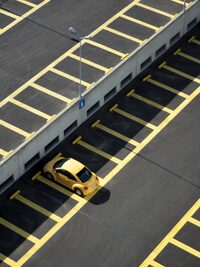 Car parks are now one of the UK’s most essential amenities and while their nature is changing (for example due to the move towards electric vehicles), the need for effective health and safety remain the same. With that in mind, here are some points to keep in mind.
Car parks are now one of the UK’s most essential amenities and while their nature is changing (for example due to the move towards electric vehicles), the need for effective health and safety remain the same. With that in mind, here are some points to keep in mind.
Safety begins at the approach and entrance
These days most private commercial car parks use automatic barriers. This generally makes a great deal of sense for many reasons, not least being the fact that they can be monitored and controlled centrally.
You do, however, have to choose the right form of barrier for the right situation. For example, an “arm-type” barrier takes up minimal space, but it is easily evaded by pedestrians (and even cyclists), which may encourage thefts. An automatic gate is more secure, but will need space to move.
All surfaces need to be well-maintained and all areas suitably lit
In addition to routine maintenance such as periodic resurfacing and repainting, you’ll need to think about seasonal maintenance. This is probably most obvious in winter, the time of ice and snow, but what about spring with all its rain, which can leave slippery puddles?
Summer shouldn’t be too bad from a health and safety perspective, but if you’re anywhere near trees, then you’ll have falling leaves to deal with in autumn.
Drivers need room to manoeuvre without bumping into each other (or pedestrians)
There should be a logical, intuitive traffic flow with signs to guide people as necessary and remember that these signs need to be seen in all weather conditions and at night so they should be reflective and/or lit.
Speed limits should take into account the fact that there will potentially be a lot of vehicles and pedestrians in close proximity in a tight space, so usually setting them is a case of the lower the better.
Pedestrians need to be kept safe from vehicles
First of all, pedestrians need space to be able to get in and out of their vehicles safely. The standard dimensions of a parking bay are 4.8m x 2.4m. Accessible bays are usually 4.8m x 4.8m.
You can adjust this if it makes sense for your business, for example if you know that a lot of your customers have “smart cars” then you could have smaller bays, just as long as people have enough space to get in and out.
They also need clear walkways through the car park, which are obviously distinct from the roadways used by vehicles.
Safety includes security, and this must be maintained in a legal manner
Cars are a tempting target for thieves; even if they can’t steal the vehicle they can attack the contents. More violent thieves may also attack people on their way in and out of the car park, or even in the car park itself if they get the opportunity.
Some paying customers might even use the car park with malicious intent, possibly keeping their vehicle there while they undertake a crime elsewhere.
Effective monitoring systems such as CCTV and ANPR can go a long way to deterring this, just remember that they need to be implemented in a way which is compliant with GDPR.
Author Bio
This article was contributed by Newgate Newark Ltd, a leading security gate and barrier manufacturer in the UK.